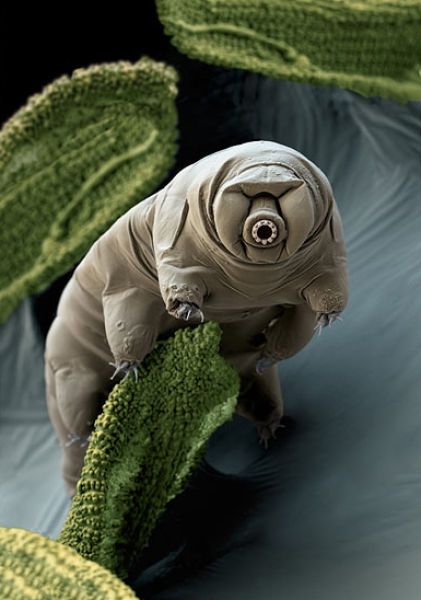|
|
Tardigrades
|
The most convenient place to find tardigrades is on lichens and mosses. Other environments are dunes, beaches, soil, and marine or freshwater sediments, where they may occur quite frequently (up to 25,000 animals per litre). Tardigrades often can be found by soaking a piece of moss in spring water.
Tardigrades are polyextremophiles and are able to survive in extreme environments that would kill almost any other animal. Some can survive temperatures of -273°C (-460 °F), close to absolute zero, temperatures as high as 151 °C (303 °F), 1,000 times more radiation than other animals, and almost a decade without water. In September 2007, tardigrades were taken into low Earth orbit on the FOTON-M3 mission and for 10 days were exposed to the vacuum of space. After they were returned to Earth, it was discovered that many of them survived and laid eggs that hatched normally, making these the only animals known to be able to survive the vacuum of space.
Tardigrades have barrel-shaped bodies with four pairs of stubby legs. Most range from 0.3 to 0.5 millimetre (0.012 to 0.020 in) in length, although the largest species may reach 1.2 millimetres (0.047 in). The body has four segments (not counting the head), four pairs of legs without joints, and feet with four to eight claws each. The cuticle contains chitin and is moulted periodically.
|
|









